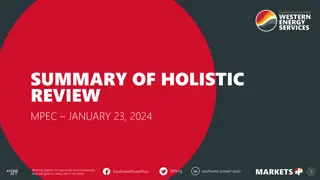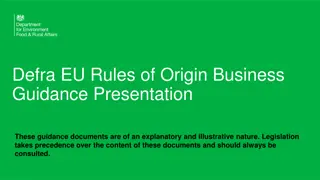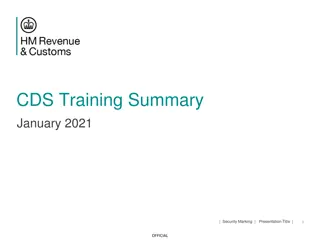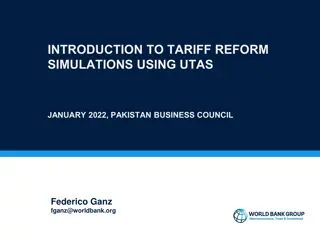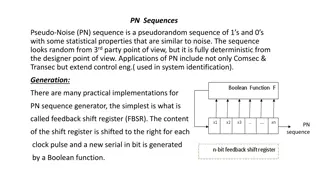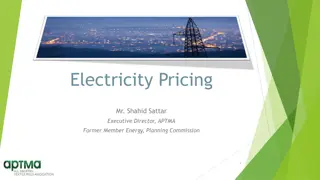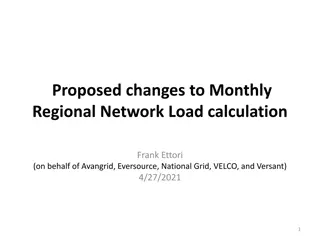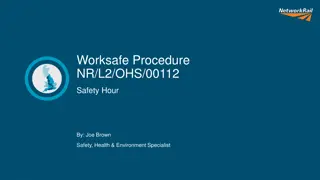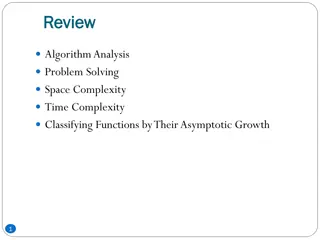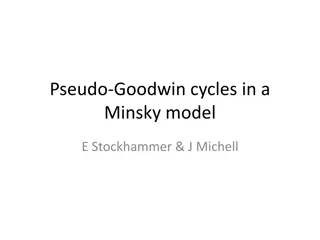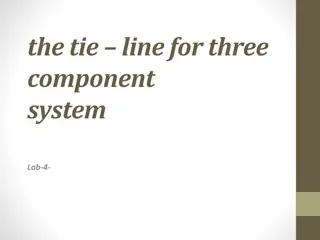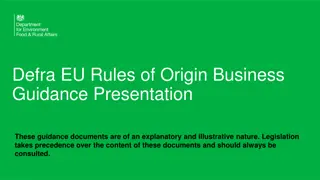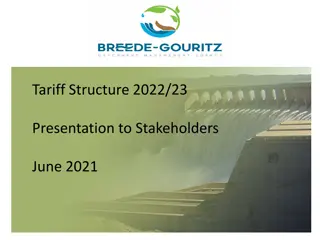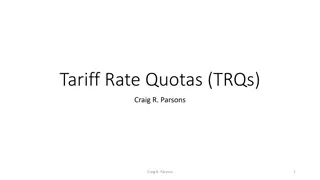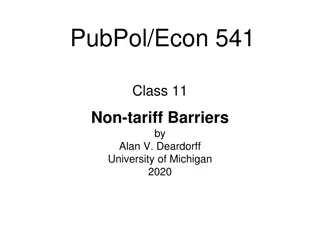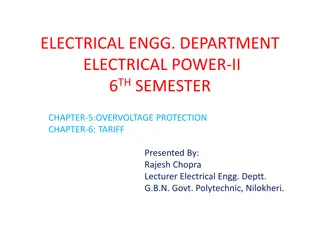Pseudo-Tie Business Procedure Tariff Administration, August 2017
Pseudo-tie business procedure tariff administration from August 2017 outlines the purpose, implementation, and types of pseudo-ties in the energy industry. It covers dynamic transfers, pseudo-tie procedures, and various stakeholder involvements. The document details the process of implementing pseudo-ties to ensure reliability, compliance, and effective management of energy transfers between different Balancing Authority Areas.
Download Presentation

Please find below an Image/Link to download the presentation.
The content on the website is provided AS IS for your information and personal use only. It may not be sold, licensed, or shared on other websites without obtaining consent from the author. Download presentation by click this link. If you encounter any issues during the download, it is possible that the publisher has removed the file from their server.
E N D
Presentation Transcript
Pseudo-tie business procedure Tariff Administration, August 2017
Purpose of pseudo-tie procedure Implement pseudo-ties in a reliable and compliant manner Work with all stakeholders on necessary agreements and compensation Develop a schedule for each pseudo-tie request mutually agreed upon by stakeholders Native BA, Attaining BA, Asset Owner, RTO s or other parties Ensure sufficient evaluation and study to examine pseudo-tie impact Ensure sufficient modeling and measurement to reliability operate the pseudo-tie 2
Dynamic Transfers Dynamic Transfers: Provisions and administration to electronically move all or a portion of the real time energy services associated with a generator or load out of one Balancing Authority Area into another. Pseudo-tie: A time-varying energy transfer that is updated in Real-time and included in the Actual Net Interchange term (NIA) in the same manner as a Tie Line in the affected Balancing Authorities control ACE equations (or alternate control processes). Requires firm transmission service reservation (TSR) Typically no associated tags, not subject to tag rules Transmission Load Relief embedded in Market Flow / congestion management calculations, not discretely for curtailment Additional modelling and refinement to calculations required to capture impacts in ATC, Reserves, IDC, etc. Dynamic Schedule: A time-varying energy transfer that is updated in Real-time and included in the Scheduled Net Interchange (NIS) term in the same manner as an Interchange Schedule in the affected Balancing Authorities control ACE equations (or alternate control processes). Does not require firm transmission service Subject to tagging rules Transmission Load Relief seen discretely for curtailment 3
Types of pseudo-ties Generator export pseudo-tied out of Duke Generator wheeled pseudo-tie through and out of Duke Load export pseudo-tied out of Duke Duke BAA Native BA External BA Attaining BA External BA Attaining BA External BA Attaining BA Duke BAA Native BA L Registration: Duke first source & TP, external Attaining BA last sink ACE: Duke removes MW, external Attaining BA includes MW Reserves: decreased for Duke, increased for external attaining BA ATC & IDC: additional modelling captures impacts Registration: Duke first source, Attaining BA last sink ACE: Duke reduces Load Forecasting Calculation & Area Load Calculation, external Attaining BA increases Reserves: decreased for Duke, increased for external Attaining BA ATC & IDC: additional modelling captures impacts Duke BAA External BA Native BA Load import pseudo-tied into Duke External BA Native BA Duke BAA Attaining BA Generator import pseudo-tied unit into Duke External BA Native BA Registration: Native BA first source, Attaining BA last sink, Duke TP between 2 other TP s ACE: compensated for losses ATC: generation needs to be modelled to run when expected to run, since there are no tags ATC & IDC : additional modelling captures impacts Duke BAA Attaining BA L Registration: Native BA first source, Duke last sink ACE: external Native BA reduces Load Forecasting Calculation & Area Load Calculation, Duke increases Reserves: decreased for external Native BA, increased for Duke ATC & IDC: additional modelling captures impacts Registration: Native BA Source, Duke last sink & TP ACE: external Native BA removes MW, Duke includes MW Reserves: decreased for external Native BA, increased for Duke ATC & IDC : additional modelling captures impacts 4
Roles in pseudo-tie procedure Role Generator Owner / Load Owner Requestor of the pseudo-tie that is either importing or exporting generation or load. Native BA Source BA of generation or load served. Native RC Source RC of generation or load served. Attaining BA Recipient BA of generation or load served. Generally, should coordinate agreement of Dynamic Transfer Agreement across parties. Attaining RC Recipient RC of generation or load served. Approves the pseudo-tie. Market Entity RTO s, if involved in pseudo-tie. Transmission Provider Entities on the path of the pseudo-tie providing firm transmission service. Transmission Operator & Planners Entities conducting required studies for firm transmission services as needed. Transmission Customer Recipient of firm transmission service from Transmission Providers on the path of the pseudo-tie. 5
Pseudo-tie business procedure Documented procedure to facilitate pseudo-tie agreements and implementation for DEC, DEP, and DEF DEMW uses MISO and PJM pseudo-tie procedures as Local Balancing Authorities and Market Participants Business procedure is high level and provide guidelines, as each pseudo-tie may have unique technical implementation and operational requirements Reimbursement Agreement and Dynamic Transfer Agreement must be filed with FERC for approval Use of agreements based on pseudo-ties is as follows: Export to DEC, DEP, or DEF => Generation Out , Load Out Duke Energy would be a party to Attaining BA s Dynamic Transfer Agreement Duke Energy and Transmission Customer (Generator Owner) would be party to TSR evaluation / results (System Impact & Facilities Studies, as needed) and Reimbursement Agreement Import to DEC, DEP, or DEF => Generation In, Load In Duke Energy would coordinate it s own Dynamic Transfer Agreement across all impacted parties Native BA, Transmission Customer (Generator Owner) Duke Energy and Transmission Customer would be party to TSR evaluation / results (System Impact & Facilities Studies, as needed) and Reimbursement Agreement Generation Through and Out of DEC, DEP, or DEF Duke Energy would be a party or not to Attaining BA s Dynamic Transfer Agreement, depending on the nature of the agreement Duke Energy and Transmission Customer (Generator Owner) would be party to TSR evaluation / results (System Impact Study, as needed) and reimbursement agreement 6
Pseudo-tie agreements System Impact Study Agreement / TSR Evaluation Standard OATT agreement to evaluate impact for Transmission Service Reservation In the case of a pseudo-tie, if firm transmission is not in place or the pseudo-tie requires a change to existing firm transmission s capacity, then the TSR for firm transmission must be evaluated before the pseudo-tie is pursued Reimbursement Agreement Contractual agreement between Duke Energy and pseudo-tie requestor to ensure payment of pseudo-tie assessment and implementation costs: Assessment fee: set $ for Duke Energy to assess and provide good faith estimate Good faith estimate: cost and timeline to implement the pseudo-tie (registration, modeling, testing, overall coordination, etc.) Does not guarantee pseudo-tie Upgrades identified out of TSR evaluation are handled through a separate reimbursement process / agreement Dynamic Transfer Agreement Contractual agreement between Duke Energy and related stakeholders to ensure pseudo-tie meets requirements for implementation, measurement, and operations Does not provide for transmission or interconnection service 7
Pseudo-tie implementation process Technical Development & Registration TSR Evaluation (as needed) Change or Retire Cutover Request Approval Assessment Request firm transmission service If needed, complete System Impact Study If needed , conduct Facilities Study and provide good faith cost estimate and timeline If needed, agree to have identified upgrades in place prior to pseudo-tie activation Execute Service Agreement Setup accounting to capture costs Determine studies with related timelines and operational procedures to support pseudo-tie Confirm ability to meet all measurement requirements Develop and provide good faith cost estimate and timeline to implement pseudo- tie Offer executable Dynamic Transfer Agreement Execute Dynamic Transfer Agreement File Dynamic Transfer Agreement with FERC for approval FERC rules on Dynamic Transfer Agreement Request Dynamic Transfer Determine if firm transmission service is existing or needs updated Execute Reimbursement Agreement File Reimbursement Agreement with FERC for approval FERC rules on Reimbursement Agreement Complete installation and testing of all required communication and measurement equipment Complete modelling and calculation updates Confirm all measurements are configured, tested, and ready for activation Register pseudo-tie in NAESB web-registry RC reviews/approves pseudo-tie Attaining BA hosts call to support cutover Release Production model Duke Energy sends invoice for actual costs incurred per Reimbursement Agreement Invoice for costs paid Change use same process for new request Retire - Notify Duke Energy 90 Days prior to retirement 8
Pseudo-tie implementation process Time to arrange firm transmission + Approximately 1 year lead time for pseudo-tie Technical Development & Registration TSR Change or Retire Assessment Approval Cutover Evaluation NO 45 Days 150 to 300+ days from completion of TSR evaluation, depending on upgrades plus requirements for communications and measurement Per Duke Energy Joint OATT to arrange firm transmission service: minimum 60 days lead time + potential study time + potential facilities upgrade time Change = same timelines as a new pseudo-tie Firm transmission service existing and service will NOT require changes? Pseudo-Tie Request Retire = 90 day lead time 85 Days 25d + 60d for FERC approval of Reimbursement Agreement Technical Development & Registration Change or Retire Assessment Approval Cutover YES Approximately 1 year lead time for pseudo-tie 45 Days 150 to 300+ days, depending on requirements for communications and measurement 9
Pseudo-tie change or retirement Change Any change to a pseudo-tie would basically run through the same process as a new pseudo-tie Depending on the nature of the change, the timeline for implementation could vary widely Retirement Provide Duke Energy minimum of 90 days notification for legal to coordinate to Dynamic Transfer Agreement closure and any required FERC notifications FERC Notice of Cancellation 30 days in advance FERC 60 days to rule on cancellation Update pseudo-tie registration with NAESB, BA registration requirements and any related TSR Owner of generator or load will coordinate necessary calls prior to and during deactivation to ensure technical details are completed Finalize modeling, communication, and operational changes 10




